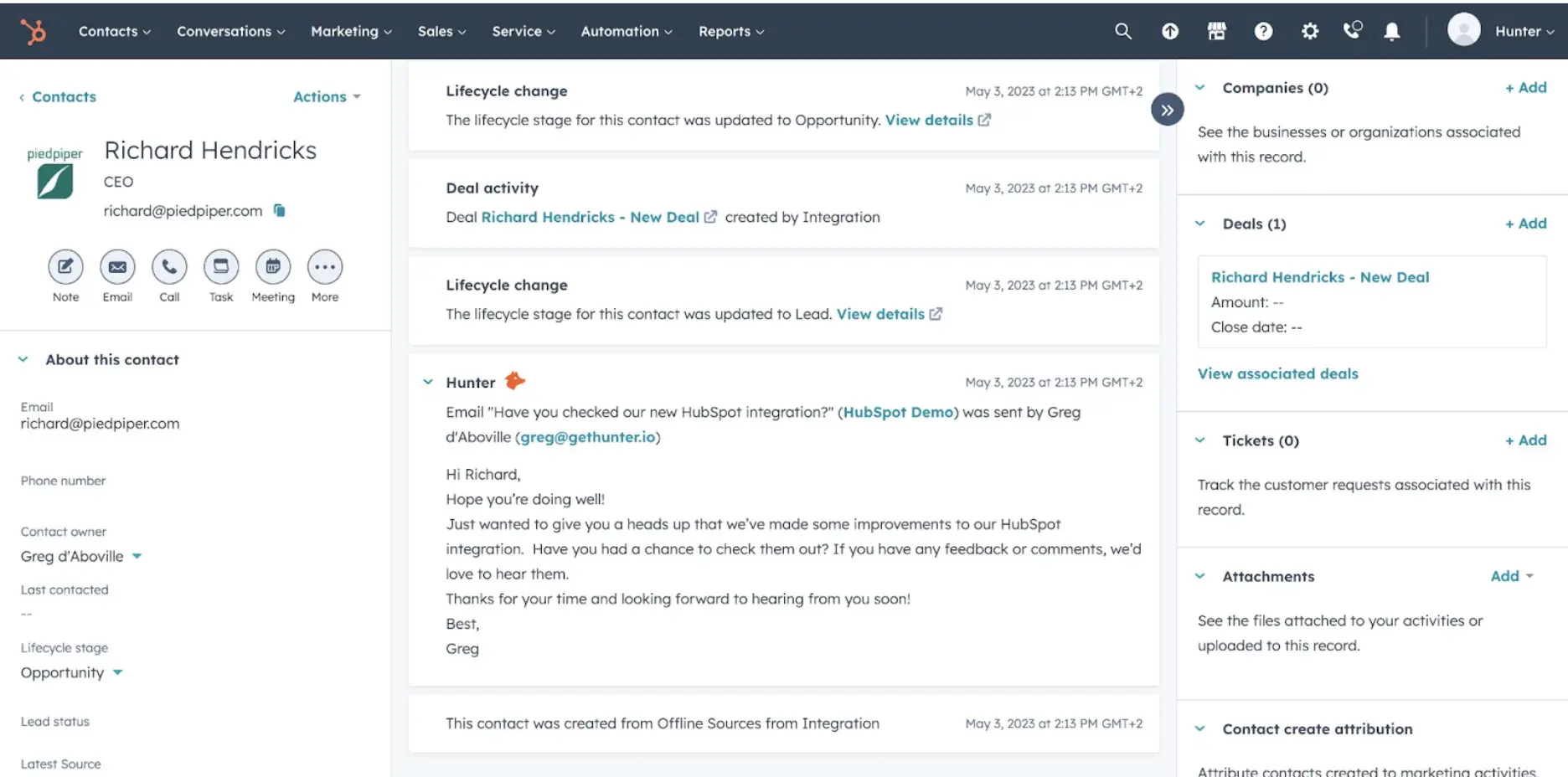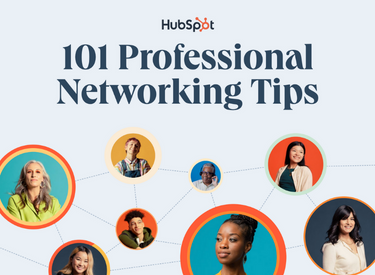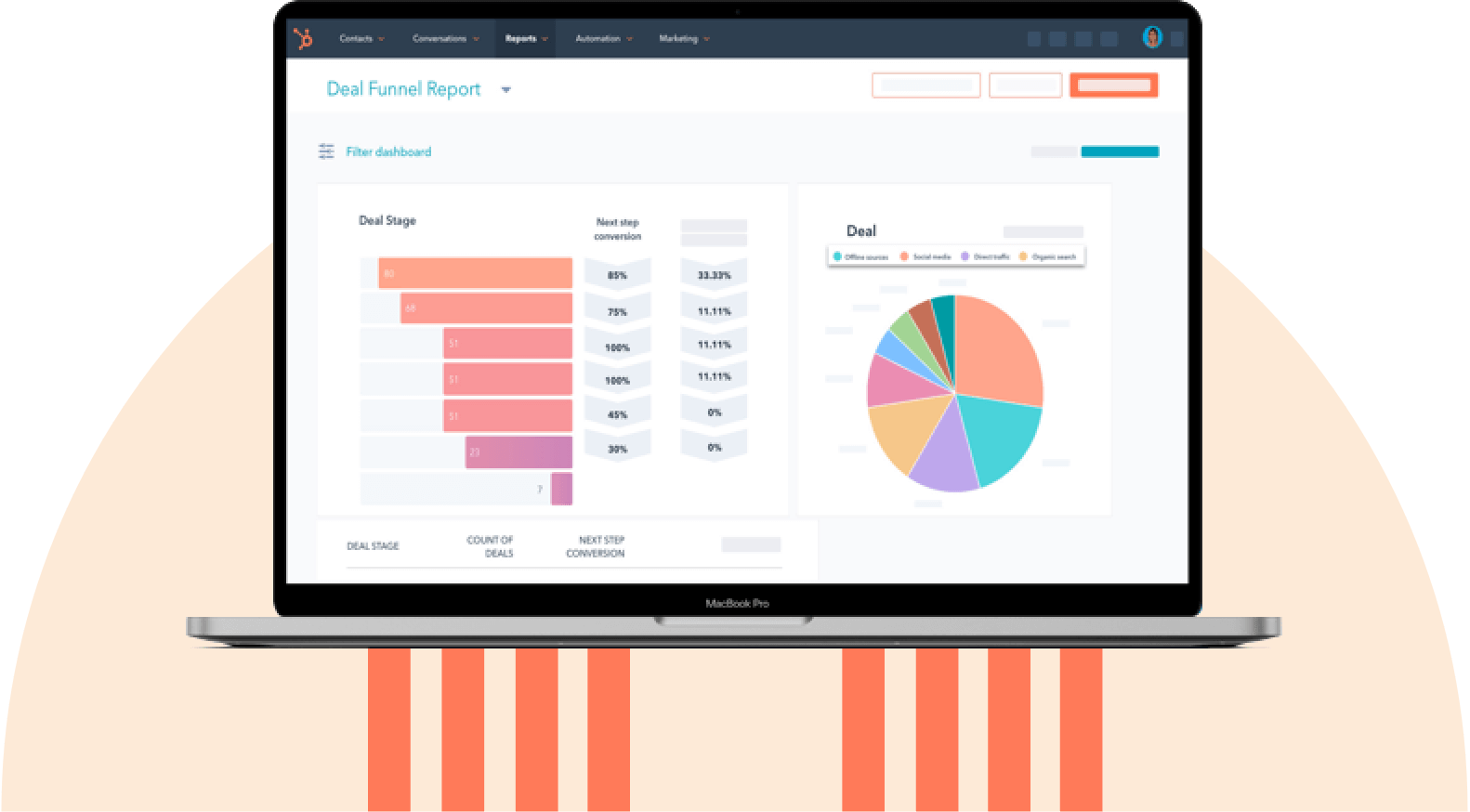Building relationships with prospects before reaching out over email helps marketers and salespeople foster trust and provide real value. Indeed, in my experience, if you’re able to ask a lead for their email personally, your chances of getting a reply skyrocket.
As such, in this article, I’ll explore the downsides of cold outreach before diving into my top tips for finding email addresses and filling your pipeline … without being a creep.
Table of Contents
- Why You Shouldn’t Conduct Cold Outreach
- Tips for Finding Email Addresses
- Testing It Out
- How to Find Company Email Addresses
- Tips for When You Just Need to Fill Your Pipeline
Why You Shouldn’t Conduct Cold Outreach
There are a host of tools that can help you find any email address you wish. And of course, you can always guess at a prospect’s email address by replicating the formatting of someone else at the company and just hoping it goes through.
But in my opinion, that is far from the best way to reach prospects. After all, you only have one chance to make a first impression. To avoid the open > blank stare > delete cycle, it’s vital to earn your prospect’s attention by creating content, materials, and videos that are useful to them and targeted toward their unique needs.
How Not to Find Email Addresses
Think buying emails sounds like an easy way to infuse your pipeline with new leads? It can be, but it also comes with some major downsides:
- These lists also often include email addresses that have been gathered without users’ permission, making it more likely that recipients will label your messages as spam.
- Whenever you buy emails, there’s always a chance that you’ll buy a list with spam traps: fake email addresses that have never been used and are included specifically to trap spammers who buy robotically harvested email lists.
If you’re caught in a spam trap, your sender reputation can be damaged, which can result in your bounce rate increasing, your IP address being blacklisted, or your sending domain being blacklisted.
As IT expert Ben Lutkevich explains, “The best way to avoid acquiring spam traps in a contact list is to practice good email management. A poorly maintained email list could indicate a potential spammer and, therefore, attract a spam trap. A spam trap in the contact list will then worsen the sender’s reputation by decreasing their email delivery rate.”
In other words, if you get caught in a spam trap, it can do irreparable damage to your brand. As such, it’s vital to follow email management best practices from the get-go.
What to Do Instead
Instead of this kind of cold outreach, it’s best to build a genuine relationship before sending an email.
What does this look like in practice? Say Mary works at a widget manufacturing company that you’d like to do business with. Rather than emailing her right off the bat, start by finding or creating a piece of content that speaks to how your product has reduced widget machine mistakes. Share that content with Mary via LinkedIn, a professional group you’re both active in, or X (formerly Twitter).
Once you’ve provided value and engaged in casual conversation, gauge the situation to discern when to ask for Mary’s email. For example, you might send Mary a LinkedIn message saying:
“Hi Mary,
We’ve been exchanging comments about my article on error reduction for widget manufacturing machines for a while now. I’d love to tell you more about how our product works, because I think we could produce similar results for your company. If you’d like to share your email, I'll follow up with you directly.
Thanks, Meg”
If you’ve provided enough value to Mary and you have a product she’s interested in, she’s likely to be open to sharing her email address with you. If not, Mary might need more time interacting with you and your product from a distance — or she might not be the right person for you to speak with at her company.
Of course, there are times when all you need is an email address. You might have lost a prospect’s contact information, or you might be conducting warm outreach to a prospect with whom you’ve already made initial contact.
There are a handful of strategies that I’ve found that can help you appropriately and respectfully access prospects' emails in situations like these—without coming across as a creep. Let’s go over how to find business email addresses’.
1. View the “Contact Us” page of their company website.
Almost every company has a “Contact Us” page. As such, you can use the contact information listed there to call the company directly or send an exploratory email to their main inbox. With either approach, try a message that looks something like this:
“Hello,
My name is Meg, and I work with XYZ Widget Solutions. I wonder if you could help me? I’m hoping to learn more about how you manage your widget manufacturing machines; would you be able to connect me with the right person to talk to about that?
Thanks, Meg”
People love to help other people. And, chances are, the administrative coordinator or executive assistant monitoring this inbox or voicemail box will have no problem connecting you with the appropriate stakeholder. Plus, because you’ve kept your message vague and non-salesy, you’re likely to pique the interest of your audience and earn a reply.
2. View their author page.
Has your prospect written for their company blog? If so, take a look at their author bio and check to see whether it lists their contact information.
At the very least, you’ll learn more about them and perhaps gain access to their LinkedIn or X accounts to begin relationship-building. And in the best-case scenario, they’ll include their email address or other contact information, making it easy for you to reach out and share just how much you’ve enjoyed their work.
3. Use LinkedIn to build rapport.
As a writer for HubSpot, I get lots of LinkedIn spam that I open and immediately delete. The messages I respond to are not necessarily from people I know, but they are thoughtful, personalized, and they don’t include a pitch.
If you’re asking to connect with a prospect on LinkedIn, include a message that tells them why you’re a fan or their business or their work, share a valuable piece of information, and tell them why you’d appreciate a connection. Here’s what that looks like:
“Hi Mary,
I’m a big fan of the work you do with Company X. I saw your recent comments on an article about widget machine errors and they really resonated with me (I’ve seen my fair share of terrifying widget errors).
Just wanted to say hello and that I’d love to connect here. Thanks for the work you’re doing!
Best, Meg”
A message like this flatters the prospect’s work, asks for a simple “close” (i.e., “Can we connect?”), and leaves things friendly and balanced. Once you’ve connected, you can start to share articles you know are relevant to your prospect and continue to engage with the content they share. Then, once you’ve built enough rapport, you can reach out and ask for their email address.
As Senior Sales Director for GE Aerospace Amir Emam describes in a comprehensive article on the importance of building rapport, “Rapport-building is the process of establishing a connection, creating trust, and fostering a sense of mutual understanding between you and your potential client. Trust is a key element of any successful sales relationship.”
Connecting on LinkedIn can be a great way to build this kind of genuine trust, ultimately leading to long-term, mutually-beneficial relationships with your prospects.
“When a client trusts you, they are more likely to listen to your recommendations, share their concerns, and ultimately allow you to serve them,” Emam writes.
4. Reach out on X.
Does your contact have a handle on X (formerly Twitter)? If you’re not sure, do a simple Google search — e.g., “Mary Smith Twitter” — to find out. Then, check out Mary’s bio for clues to other websites she may be active on, in case you want to engage with her there. Alternatively, if that doesn’t work, you can always follow your contact and tweet at them directly.
In my experience, a simple introductory message can go a long way. For example, try something like, “@MarySmith, I loved your recent post on widget error reduction. Do you have any other posts to share on the topic?”
A short message like this flatters your prospect (in a non-creepy way) and invites them to share more information with you, thus engaging them in casual conversation.
Then, if Mary replies with another article link, you can consider responding to her most salient points through a Direct Message…and if that conversation goes well, consider popping the question: “Mary, could we continue this conversation over email?”
5. Subscribe to their email list.
These days, many companies send weekly or even daily email newsletters. If you subscribe to these emails (and actually read them), then you can reply to the authors via email, X, or LinkedIn with your praise, thoughts, and questions.
The authors of these newsletters might not be the exact prospects you’re trying to reach, but building relationships with them can help you get your foot in the door.
After all, once you’ve built rapport with one company employee, it’s easy to ask for an email introduction to their colleagues.
6. Use HubSpot’s Customer Profile Software.
Once you’ve exhausted the basics, it may be time to consider investing in a tool like HubSpot’s Customer Profile Software. This comprehensive suite of email marketing tools gives you access to key information about your prospects, right in your Gmail or Outlook inbox.

Personally, I’ve found that the Customer Profile Software HubSpot offers has been a great way to take my tailored outreach to the next level, as it gives me all the information I need right at my fingertips.
From contact details and key information about a prospect’s company to an overview of recent interactions and analytics, this software from HubSpot can be a strong tool in any salesperson’s toolbox.
7. Use HubSpot’s CRM and LinkedIn Sales Navigator.
In addition to HubSpot, there are a number of other digital tools that I highly recommend looking into.
For example, HubSpot’s CRM can integrate with LinkedIn Sales Navigator, giving you easy access to data from LinkedIn directly within HubSpot’s contact and company records.
I love using LinkedIn Sales Navigator to track related leads, mutual connections, common interests, and — you guessed it — email addresses without ever leaving the CRM.
This integrated approach keeps data entry at a minimum, and it ensures you’re sourcing quality leads responsibly and efficiently. Then, once you’ve set up the integration, you can navigate to any contact or company record in the CRM to see the person’s job title, company, time in role, location, and industry. You’ll also have access to additional resources under the “Icebreakers,” “Get Introduced,” and “Related leads” tabs:
- “Icebreakers” tab highlights shared connections, experiences, and interests, and it also includes a link to the lead’s recent activity stream.
- “Get Introduced” makes it easy to ask a mutual connection for a quick introduction.
- “Related Leads” allows you to find and save other leads at the company to your leads list.

8. Use HubSpot’s CRM and an Email Finder.
There are multiple HubSpot integrations for email marketing that you can use to find emails. Multiple HubSpot integrations for email marketing can help you find emails. Multiple HubSpot integrations for email marketing can help you find emails. Both Findymail and Hunter connect directly with Hubspot and offer two helpful features:
- Email finder, which allows you to find prospects’ email addresses one at a time
- Domain Search tool which lets you access all the emails associated with a particular domain.
Both of these tools empower you to put together a list of prospects in a matter of seconds.
Moreover, just as LinkedIn Sales Navigator can be integrated seamlessly into the HubSpot CRM, so too can you use the Findymail or Hunter HubSpot integration to sync your Findymail or Hunter leads with HubSpot’s CRM.
This ensures that your leads and their contact information — including contact name, email address, company, position, and even website — are all connected to your HubSpot account, making your prospecting and outreach workflow that much more accessible and streamlined.

9. Do a Google search.
Another strategy is to do a Google search. You can simply type in someone's name or company name, followed by the word email, and search. I tested this out with my name, and the top result said my email is “m******@hubspot.com.” If you get that for your search, you can do the process of elimination to figure out the email you’re looking for.
You can also type in “email site:companysite.com.” If the company you’re looking up is listed on Google and has a company email attached to its website, it can appear in SERPs. You can also try out ‘@companyname email addresses’ in the search field.
10. Try good old fashioned guessing.
Most companies follow a traditional email format, typically some combination of first and last names. If you have the prospect's name, you can try out a common combination, and your email service provider will bounce back emails to addresses that don’t exist. Here are some common formats:
- [full name]@companyname.com
- [first name initial + full last]@companyname.com
- [last name + first name initial]@companyname.com
- [last name]@companyname.com
- [first name].[last name]@companydomain.com
- [first].[last name]@companyname.com
If you don’t have a specific name/point of contact, here are some common business email formats:
- info@companyname.com
- support@companyname.com or help@companyname.com
- contact@companyname.com, hello@companyname.com, or general@companyname.com
- sales@companyname.com, marketing@companyname.com, or the specific department you’re looking to reach.
It can be effective, but I have to note that you need to be mindful of spam traps, which I mentioned before. Choose one to two options, then move on to another strategy if you can’t find success.
11. Pick up the phone.
When all else fails, you can always go old-school and pick up the phone. However, before you resort to calling your prospect, make sure you’ve tried all the methods below to get in touch with them digitally first.
If you’ve tried all these strategies and you still haven’t gotten a response (and you have reason to believe the person you’re trying to reach hasn’t received those messages), you can try the phone.
Start by contacting their main company line, and then ask whether you can be connected with the person you’re trying to contact. If they’re not available, consider asking when would be a better time, or ask if you can leave your email address for them to reach back out to you.
In a recent article, sales consultant Nicola Lutz speaks passionately to the power of phone sales. She exhorts, “If you’ve got people in your lists that you haven’t called — go have a chat. It’s good to talk.”
Lutz continues, “Don’t wait for them to fall in your lap. Don’t wait for them to respond to a generic email. Don’t just sit back and hope they loved your mailed brochure and get huffy if they don’t get in touch. It’s really not that difficult to call.”
But remember: If a prospect has expressed that they’re not interested in your outreach, or if they’ve read your emails or social media messages and haven’t replied, it’s probably a sign that you shouldn’t continue reaching out.
Testing It Out
So, what does this look like in practice? I tested out each of the strategies described above to see what works best for me when it comes to tracking down prospects’ email addresses.
First, I took a look at the “Contact Us” page on the company website of one of my target customers. This gave me a helpful starting point, but I wasn’t able to find the email address of the exact person I was hoping to connect with.
However, a quick Google search took me to a blog post they had shared on their company blog. I read their author bio, and that included links to their X and LinkedIn profiles. Thanks to those links, I was able to start interacting with them on social media, commenting on their posts and occasionally sharing relevant articles.
I also subscribed to their email list, to make sure I stayed up to date on their latest content. After a little while, I sent them a message asking if I could reach out directly via email, and they said yes!
Once I was able to connect over email, HubSpot’s Customer Profile Software tool offered a helpful way to stay organized and keep all the information I needed about the prospect in one place.
I’ve also always found HubSpot’s integrations with LinkedIn Sales Navigator and Hunter’s Email Finder to be incredibly valuable, as they can provide a seamless experience as I work to unearth my prospects’ email addresses.
And of course, when all other options have been exhausted, there’s always the phone. While many of my prospects over the years have preferred online communication, in some cases, I’ve definitely learned that picking up the phone and having a real-time conversation is the way to go.
How to Find Company Email Addresses
If you’re trying to catch the attention of a specific company, consider account-based marketing (ABM). With this approach, you’ll work with your marketing department to create a personalized outreach strategy for the specific companies you wish to reach.
In my experience, ABM is especially helpful if your addressable market is small and you offer a highly specialized or enterprise-level product. Here’s how it works:
1. Identify relevant accounts
First, Sales and Marketing should work together to identify and select relevant accounts. Company size, number of employees, location, and annual revenue can all help you decide which accounts to target. In addition, I’ve found that buyer personas can also be great for determining what type of content and channels to use to approach these companies.
2. Expand your content
Next, it’s important to expand your content to reach the large number of stakeholders that are often involved in buying decisions for account-based sales. This stage allows you to create unique, company-specific content that speaks to each stakeholder you’ll be selling to.
For example, if Finance is concerned with pricing and Operations is focused on user access, you’d create targeted content that speaks to each department’s unique concerns and goals.
3. Engage with your stakeholders
If one stakeholder prefers email while another prefers a phone call, marketing should equip salespeople to provide helpful, relevant messaging to each prospect through their preferred channels. This stage is all about getting to know your prospects and developing valuable relationships with each one.
4. Advocate
Modern buyers don’t need you to drone on and on about your product — they can do all the research they want online before even talking to you. Instead, the advocate stage is about providing value to the prospect and discussing the product/service only when necessary.
For example, if I were a salesperson for XYZ Widget Solutions, I might focus my messaging on how much time and money my prospects will save by experiencing fewer widget machine malfunctions (rather than rattling off a comprehensive list of the features XYZ Widgets can offer).
5. Measure your results
Finally, I’ve learned first hand that reporting is crucial to ensure I understand what’s working and what’s not. Measuring results related to company growth, revenue, job titles, and engagement at the account level gives you important insight into how well your ABM is working, and what you can do to improve.
Indeed, marketing expert Jane Robathan advises that it’s always important to “track specific metrics to see what’s working — fast.”
She explains, “Analytics and data drive understanding of your customers and leads, whether they convert or not. This is essential to refine your ABM campaigns and increase conversions, but it’s also important for lead scoring and aligning your overall marketing strategy.”
To complement your broader analytics, using an email tracking tool like HubSpot's free Email Tracking Software can provide real-time insights into email engagement. Knowing when and how your emails are being opened allows you to refine your follow-up timing and improve campaign effectiveness.
Ultimately, your ABM strategy will only be as effective as your ability to measure its results.
Tips for When You Just Need to Fill Your Pipeline
Of course, sometimes you just need to fill your pipeline. If that’s the case for you, I’d recommend taking a look at this helpful guide to email prospecting. Then, you can implement inbound prospecting using the following five steps:
1. Research
First, determine the quality of your leads by reviewing qualifying dimensions (a set of criteria used to evaluate how probable it is that each lead or prospect will become a customer). Then, enter this information into your CRM.
2. Prospect
Next, connect with your leads by identifying and making contact with the gatekeeper and decision-maker at your prospective company. The gatekeeper is generally the person in charge of communication or preventing information from reaching the decision-maker, such as a receptionist or executive assistant.
3. Connect
Once you’ve gotten past the gatekeeper, it’s time to close for that next meeting. You’ll likely want to set up a discovery call: that’s the first contact a rep makes with a prospect to qualify them as a lead for the next step in their sales cycle (usually, a demo).
4. Educate and evaluate
The next step is to evaluate and qualify your leads by identifying their pain points and business goals. This information allows you to tailor your sales approach and communication to provide value to your prospect. This is also the stage in which objections begin to arise.
Objections may sound like, “We just don't have the budget,” “I don’t have the time to implement this,” or “This isn’t a priority right now.” Your job is to answer and counter these objections and provide value to your prospect that addresses these areas.
5. Close
Finally, turn your opportunities into customers by asking for your prospect’s business. The outcome will be one of two possibilities: Closed-won is when the buyer purchases your product/service, and closed-lost is when the buyer does not purchase the product/service.
If your prospect doesn’t close, it might be time to walk away from the deal and consider revisiting it when the company is in a better place to buy.
What It Takes to Find Company Email Addresses
At the end of the day, time is our most precious commodity. As such, it’s no surprise that people guard their email addresses closely — after all, when you have someone’s email address, you have access to their time and attention.
Of all the strategies I’ve described for tracking down company email addresses, my absolute favorite is subscribing to prospects’ email newsletters.
In my experience, this is a great approach because it keeps my prospects top of mind, giving me insight into the content they are creating and the challenges they are facing every day. It also offers a great opportunity to engage about the ideas that I know matter most to my prospects, enabling me to spark genuine connection.
Ultimately, I believe that sales is all about building relationships. Once you’ve done your research and put in the effort to connect with a prospect, asking for their email is the easy part. While there are plenty of shortcuts that may tempt you, building your sales career on a foundation of honesty, trust, and hard work is the only way to ensure long-term success — for both you and your customers.
Sales Prospecting




.webp)








